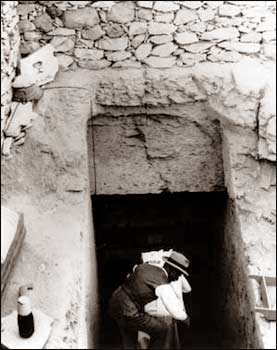
Howard Carter and the Discovery of King Tut’s Tomb
On November 4, 1922, British archeologist Howard Carter was elated when his Egyptian workers uncovered the top of a stairway cut into bedrock in the Valley of the Kings. For a decade, Carter had been searching for the tomb of the young king Tutankhamun, who had ruled Egypt 3,200 years before. Carter was particularly thrilled at the discovery of the staircase because his wealthy patron, the Earl of Carnarvon, had agreed to fund only one more season before abandoning the search. At the bottom of the staircase was a sealed doorway, which suggested that the tomb had probably not been robbed. Carter ordered the stairway filled and telegraphed his patron, ‘At last have made wonderful discovery in valley; a magnificent tomb with seals intact; recovered same for your arrival; congratulations.’ On November 26, Carter, with Carnarvon standing by, drilled a small hole in the tomb’s antechamber. Inserting a candle, Carter peered into the darkness at the rich funerary goods. When asked by Carnarvon if he could see anything, the awestruck Carter replied, ‘Yes, wonderful things…’ This photograph, taken in January 1923, shows Carter bringing a casket of grave goods up the staircase to the tomb’s entrance.
Photo: National Archives




